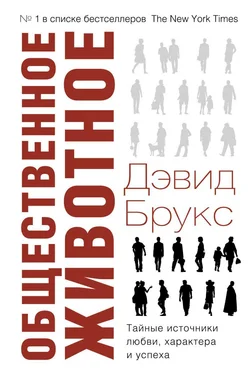Robert Skidelsky, Keynes: The Return of the Master (New York: Public Affairs, 2009), 81.
Clive Cookson, Gillian Tett, and Chris Cook, «Organic Mechanics,» Financial Times, November 26, 2009.
George A. Akerlof and Robert J. Shiller, Animal Spirits: How Human Psychology Drives the Economy, and Why It Matters (Princeton, NJ: Princeton University Press, 2010), 1.
Jim Collins, «How the Mighty Fail: A Primer on the Warning Signs,» Businessweek, May 14, 2009.
Richard H. Thaler and Cass R. Sunstein, Nudge: Improving Decisions About Health, Wealth, and Happiness (Ann Arbor, MI: Caravan Books, 2008), 22.
James Le Fanu, Why Us?: How Science Rediscovered the Mystery of Ourselves (New York: Vintage, 2010), 213.
Robert А. Burton, On Being Certain: Believing You Are Right Even When You're Not (New York: St. Martin’s Press, 2008), 10.
Joseph T. Hallinan, Why We Make Mistakes: How We Look Without Seeing, Forget Things in Seconds, and Are All Pretty Sure We Are Way Above Average (New York: Broadway Books, 2009), 41.
Taylor W. Schmitz, Eve De Rosa, and Adam K. Anderson, «Opposing Influences of Affective State Valence on Visual Cortical Encoding,» Journal of Neuroscience 29, no. 22 (June 3, 2009): 7199-7207.
Hallinan, 219.
Norbert Schwarz and Gerald L. Clore, «Mood, Misattribution, and Judgments of Well-Being: Informative and Directive Functions of Affective States,» Journal of Personality and Social Psychology 45, no. 3 (1983): 513-23.
Timothy D. Wilson, Strangers to Ourselves: Discovering the Adaptive Unconscious (Cambridge, MA: Belknap Press, 2002), 101-102.
John Huizinga and Sandy Weil, «Hot Hand or Hot Head: The Truth About Heat Checks in the NBA» MIT Sloan Sports Analytics Conference, March 7, 2009.
Robert E. Christiaansen, James D. Sweeney, and Kathy Ochalck, «Influencing Eyewitness Descriptions,» Law and Human Behavior 7, no. 1 (March 1983), 59-65.
«Roots of Unconscious Prejudice Affect 90 to 95 percent of People,» Science-Daily, September 30, 1998.
Carey Goldberg, «Even Elders Reflect Broad Bias Against the Old, Study Finds,» Boston Globe, October 28, 2002.
David G. Myers, Intuition: Its Powers and Perils (New Haven, CT: Yale University Press, 2004), 205.
Ар Dijksterhuis, Henk Aarts, and Pamela К. Smith, «The Power of the Subliminal: On Subliminal Persuasion and Other Potential Applications,» in The New Unconscious, eds. Ran R. Hassim, James S. Uleman, and John A. Bargh (Oxford: Oxford University Press, 2005), 82.
Wilson, 19.
Jonah Lehrer, How We Decide (New York: Houghton Mifflin Co., 2009), 136.
Benedict Carey, «Blind, Yet Seeing: The Brain’s Subconscious Visual Sense,» New York Times, December 23, 2008.
Jonah Lehrer, Proust Was a Neuroscientist (New York: Houghton Mifflin Co., 2007), 184.
Myers, 55.
Wilson, 26-27.
Benedict Carey, «In Battle, Hunches Prove to Be Valuable,» New York Times, July 28, 2009.
Antoine Bechara, Hanna Damasio, Daniel Tranel, and Antonio R. Damasio, «Deciding Advantageously Before Knowing the Advantageous Strategy,» Science 28, no. 5304 (February 1997): 1293-95.
Wilson, 25.
Gerd Gigerenzer, Gut Feelings: The Intelligence of the Unconscious (New York: Penguin Books, 2007), 9-11.
Paul A. Klaczynski, «Cognitive and Social Cognitive Development: Dual-Process Research and Theory,» in In Two Minds: Dual Processes and Beyond, eds. Jonathan Evans and Keith Frankish (Oxford: Oxford University Press, 2009), 270.
Ар Dijksterhuis and Loran Е Nordgren, «А Theory of Unconscious Thought,» Perspectives on Psychological Science 1, no. 2 (June 2006): 95-109.
Dijksterhuis and Nordgren. 100.
Dijksterhuis and Nordgren, 104.
Dijksterhuis and Nordgren, 102.
John A. Bargh, «Bypassing the Will: Toward Demystifying the Non-conscious Control of Social Behavior,» in The New Unconscious, eds. Ran R. Hassim, James S. Uleman, and John A. Bargh (Oxford: Oxford University Press, 2005), 53.
James С. Scott, Seeing Like a State: How Certain Schemes to Improve the Human Condition Have Failed (New Haven, CT: Yale University Press, 1998), 311.
Guy Claxton, Hare Brain, Tortoise Mind: How Intelligence Increases When You Think Less (New York: Harper Perennial, 2000), 18.
Colin Camerer et al., «Neural Systems Responding to Degrees of Uncertainty in Human Decision-Making,» Science 310, no. 5754 (December 9, 2005): 1680-83.
David Rock, Your Brain at Work: Strategies for Overcoming Distraction, Regaining Focus, and Working Smarter All Day Long (New York: HarperCollins, 2009), 49.
Gerald Traufetter, «Have Scientists Discovered Intuition?», Der Spiegel, September 21, 2007.
Patrick Rabbitt, «Detection of Errors by Skilled Typists,» Ergonomics 21, no. 11 (November 1978): 945-58.
Joseph T. Hallinan, Why We Make Mistakes: How We Look Without Seeing Forget Things in Seconds, and Are All Pretty Sure We Are Way Above Average (New York: Broadway Books, 2009), 53.
Peter E. Drucker, The Essential Drucker: In One Volume the Best of Sixty Years of Peter Drucker's Essential Writings on Management (New York: HarperCollins, 2001), 127.
Drucker, 218.
David Moshman and Molly Geil, «Collaborative Reasoning, Evidence for Collective Rationality,» Thinking and Reasoning 4, no. 3 (July 1998): 231-48.
Helen Fisher, «The Drive to Love: The Neural Mechanism for Mate Selection,» in The New Psychology of Love, eds. Robert J. Sternberg and Karin Sternberg (New Haven, CT: Yale University Press, 2006), 105.
Louann Brizendine, The Female Brain (New York: Broadway Books, 2006), 136-37.
William James, The Principles of Psychology, vol. 2, Chap. 22.
John Gottman, Why Marriages Succeed or Fail: And How You Can Make Yours Last (New York: Fireside, 1995), 57.
John Cacioppo and William Patrick, Loneliness: Human Nature and the Need for Social Connection (New York: W. W. Norton & Company, 2008), 170.
Читать дальше












